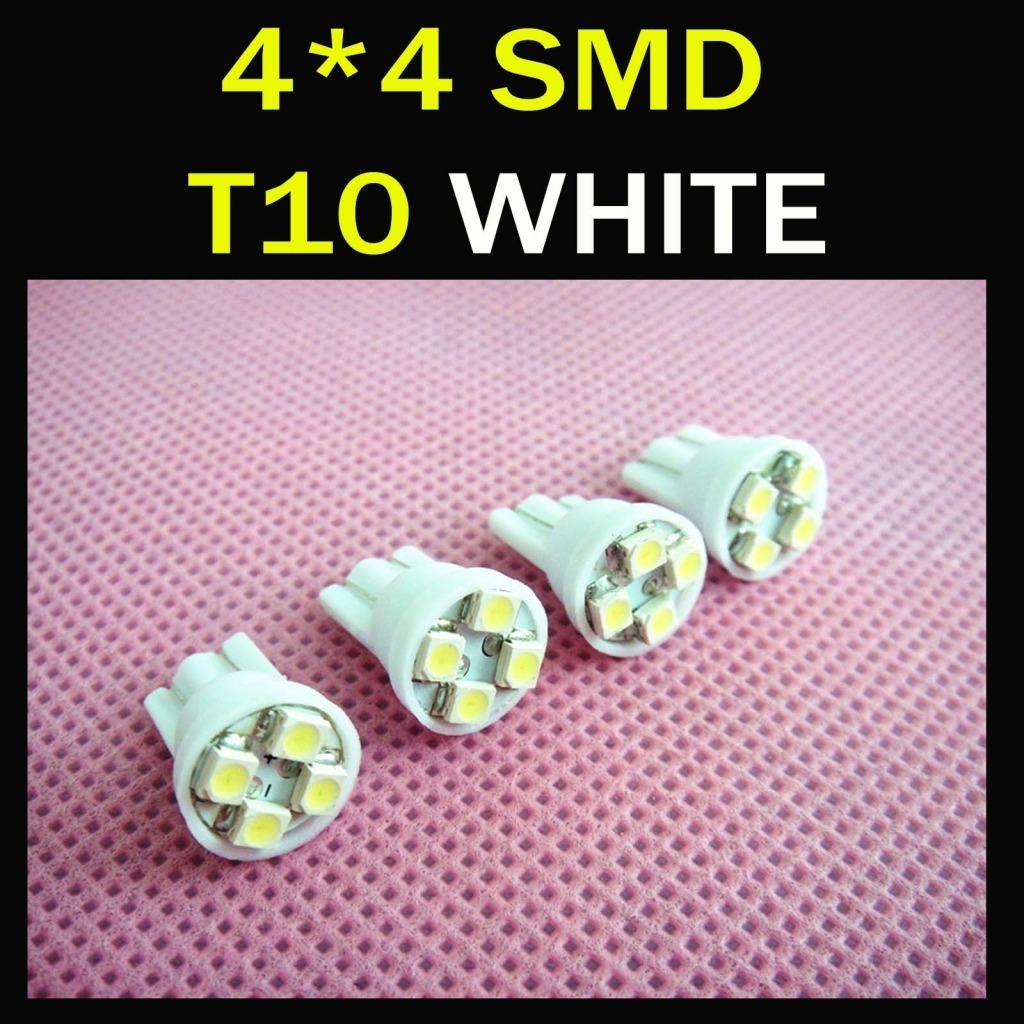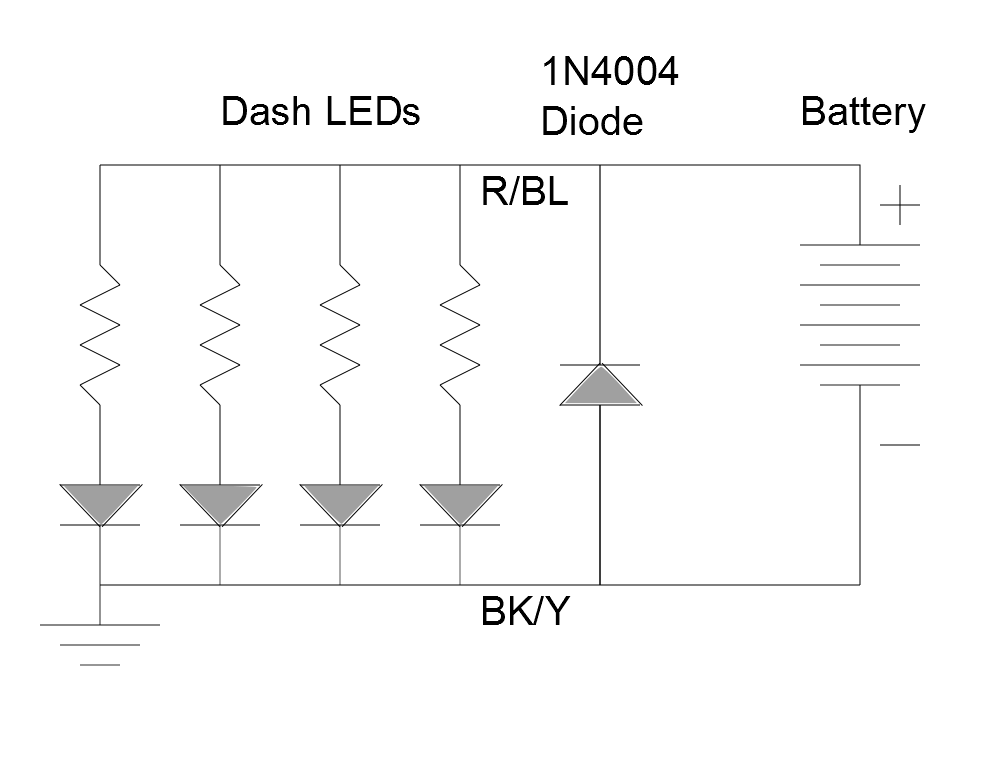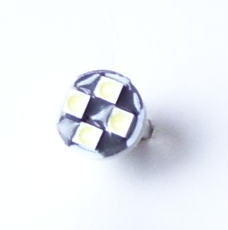After 3 sets of LED dash light completely died, I did some head
scratching as to cause.
 Each
T10 wedge bulb consists of an LED wired in series with a small,
current-limiting resistor. Initially, I thought vibration was the
culprit, but the resistor-LED connection was fine in all cases.
Each
T10 wedge bulb consists of an LED wired in series with a small,
current-limiting resistor. Initially, I thought vibration was the
culprit, but the resistor-LED connection was fine in all cases.
Next was the possibility of voltage spikes.
When
the starter disconnects, a voltage transient is generated ('back EMF')
and injected into the electrical system. If this is positive, a bit of
extra current would flow through the LEDs in the forward direction and
shouldn't do very much harm (i.e. low voltage x low current).
If
the transient is negative (i.e. driving the nominal +12V bus negative
with respect to ground) and large, it might exceed the reverse
breakdown voltage of the LEDs, causing high voltage x low current =
higher power and blowing the little suckers out.
To check out
this theory, I bought a 4th set of dash LEDs and dug a 1N4004 diode out
of the electronic junk box. The idea is to wire the diode across the
dash light bus so that normally it's reverse biased and does not
conduct, but if/when there is a negative pulse, it conducts and
maintains the voltage below dash-LED-blowing levels. I scraped the
insulation off one blue/red LED wire and soldered the cathode (the end
with the white line) to it, and connected the anode under the
yellow/black screw terminal on the back of the meter module.
 Best I can say for all this
is the LEDs are cheap on eBay and work well before they blow out.
Results to follow.
Best I can say for all this
is the LEDs are cheap on eBay and work well before they blow out.
Results to follow.
Oct. 2014 Results
Well,
2 of these lights have become intermittent despite the little diode. I
think the low-power dash lights are not up to the vibration level of
motorcycling. The higher power LEDs in the tail light and turn signals
seem fine. Going back to incandescent for the dash lights.
Trying Again - End November 2015.
Reasoning
that dash LED failures may be caused by vibration cracking the
connections, I decided to try my hand at circuit potting. The idea is
to make the circuit more mechanically rigid, so connections don't flex
and break.
 Bought some more T10 4 SMD
LEDs (see above),
about $1.50 for 10 on eBay.
Bought some more T10 4 SMD
LEDs (see above),
about $1.50 for 10 on eBay.
Mixed
up some JBWeld on the bottom outside of a glass jar, and heated it up
in the microwave to thin it. Using a toothpick, I drizzled the epoxy
into the center and corner spaces of the mounting plate holding the
little SMD LEDs.
Installed and tested four of these in the cold
garage. So now the packaging looks a little ugly, but the light is not
impacted, and I'm hoping they last more than the typical 'work for one
season' of the past.
 Best I can say for all this
is the LEDs are cheap on eBay and work well before they blow out.
Results to follow.
Best I can say for all this
is the LEDs are cheap on eBay and work well before they blow out.
Results to follow.